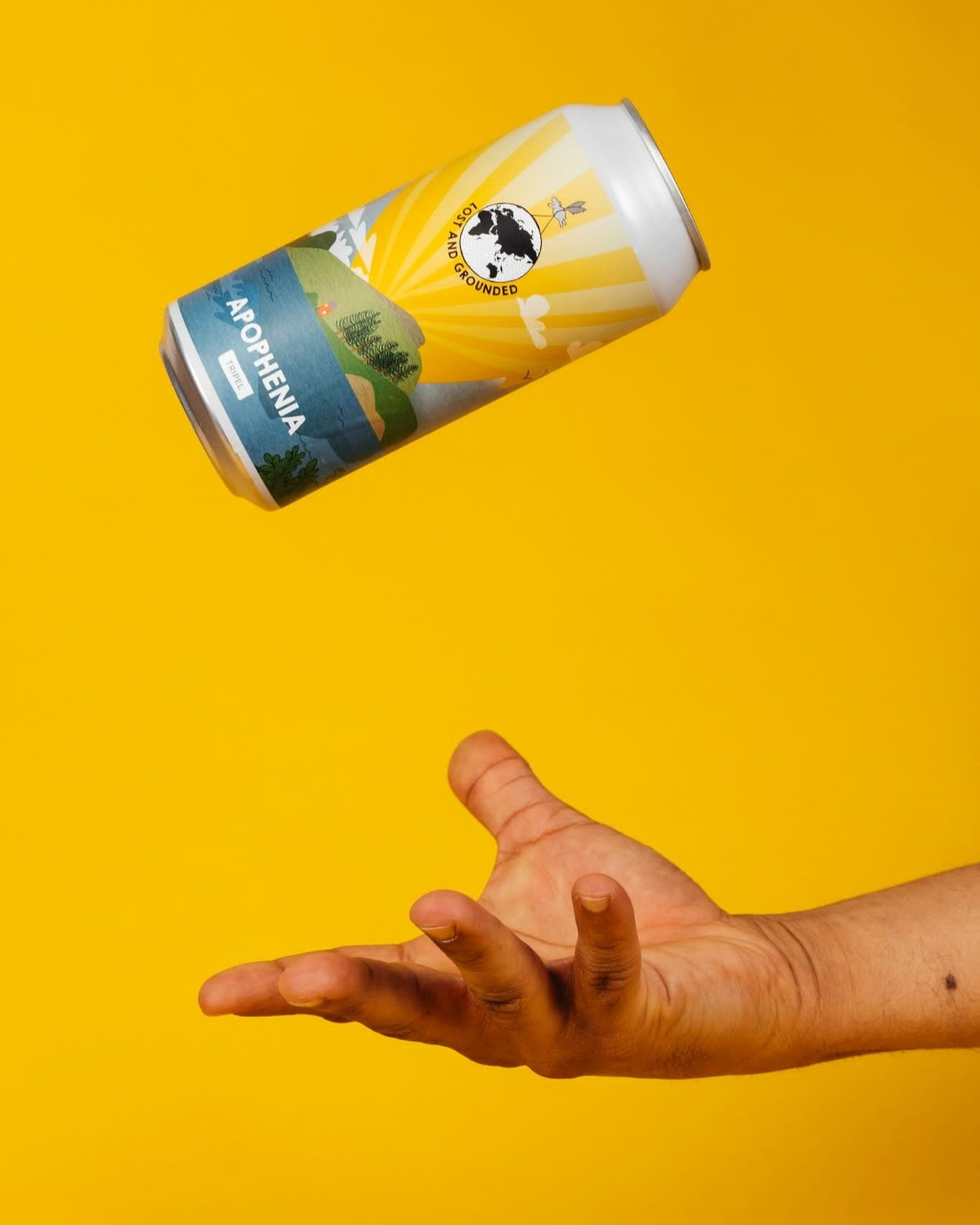Seeing Tripel!
It may seem unusual to have an 8.8% ABV core beer but for us our Apophenia Tripel was actually one of the first styles added to our core range when the brewery was first established in 2016. For us it’s an important style as it really showcases the wonderful, complex flavours of Belgian ales and traditional brewing techniques. In August we were thrilled to see Apophenia featuring in CAMRA’s publication ‘World’s Greatest Beers’ after being recognised by beer writer and broadcaster, Pete Brown. Inspired by [Co-Founders] Alex and Annie’s time living in Belgium and loved by many, Apophenia is our tribute to the classic Tripel.
What is a Tripel?
It is a common misconception that a tripel is brewed to be three times stronger than an average beer or that it perhaps uses three times the number of ingredients. The history of this style is also surprisingly recent, having only been developed during the late 20th century by Trappist Monks.
The word ‘tripel’ is thought to have originated from when brewers used a brewing process called ‘parti-gyle’ to produce different strength batches of beer from a single mash. The first runnings of wort would be high in sugar, so the final beer would have an elevated ABV, and the grains would be mashed again for subsequent brews. Each batch would produce a weaker wort which were blended by the brewer to produce different strength beers. These would then be labelled as ‘X’, ‘XX’ and ‘XXX’ – or single, double(dubbel) and tripel.
Belgian Trappist Monks were famous for brewing their dubbels and tripels. Traditionally they brewed beer for nourishment, particularly during periods of fasting, and as drinking water wasn’t very sanitary at the time. By the 17th and 18th centuries they began to use beer production as a means to be self-sufficient, along with other artisanal crafts such as cheesemaking, and sold their produce to fund projects in and around their monasteries. Up until the 19th century Belgian beers were predominantly dark ales, due to ingredients and traditional breweing processes, but the growing popularity of paler beers across the Czech Republic and Germany lead to the development of the modern tripel. In 1936, the Trappist Monks at Westmalle first brewed their Tripel which many consider to be the global standard of this style today.
“Expertly balanced with hops, orange peel and coriander”
Belgian yeast is what defines a tripel and is the star of our Apophenia. It’s character is peppery, phenolic, fruity and layered in complexity adding flavours of clove and banana to the finished beer. We use a touch of orange peel and coriander seed to create balance whilst the hops take on a supporting role, complimenting and enhancing the spicy profile of this beer. The addition of dextrose lightens the body and colour of our Apophenia as well as boosts the ABV, leaving you with a flush of boozy warmth to finish.
What is the story behind the name?
The word ‘apophenia’ is used to describe our human nature of creating patterns or meaning between unrelated things, for example identifying shapes or animals out of cloud formations. We often joke that at 8.8% our Apophenia may cause you to see more apophenias and we even included one into the panoramic of our core range. Can you can spot it?!
The latest batch of our Apophenia is probably our best version yet (if we do say so ourselves!). We’ve dialled in the recipe, maximising on the complex spicy and citrus flavours that we love so much about this beer. A real taste of Belgium!
Our latest batch of Apophenia is available now from the webstore or at our taproom.




